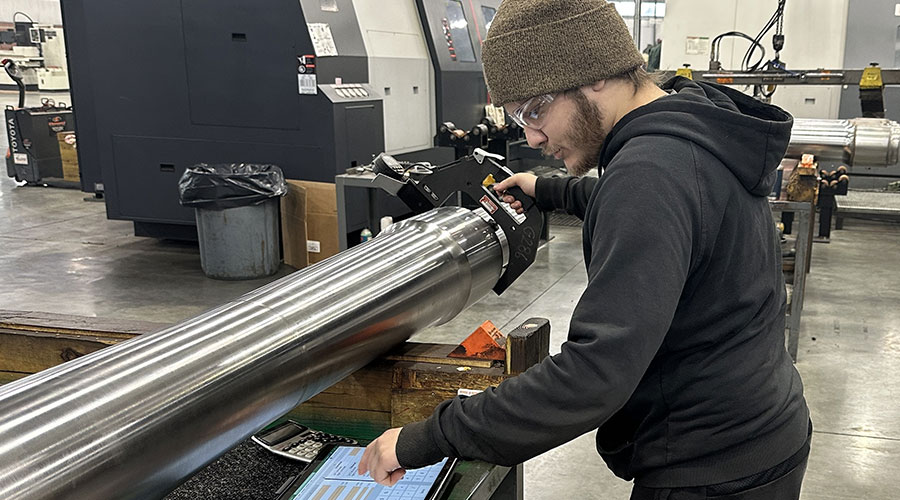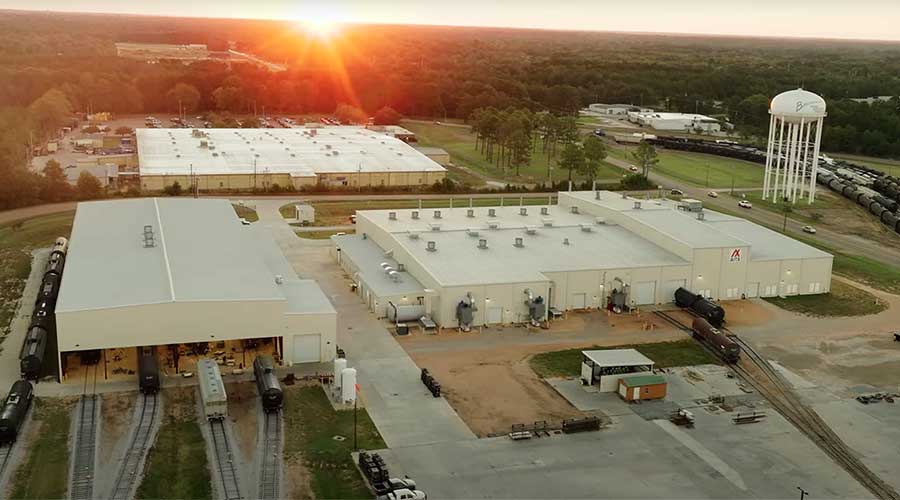Stay updated on news, articles and information for the rail industry
February 2012
Rail News: Mechanical
For the rail finance and leasing sector, a promising year ahead
During the information gathering for our 2012 Finance & Leasing Guide (which will be published in our February issue), we asked more than 60 industry executives a couple questions:
1. What are the key issues facing the rail finance and leasing sector in 2012?
2. And: How will 2012 compare with 2011 — better (however you define "better")? Worse? Why?
In general, they told us they feel good about the year ahead. Challenges? Sure. There'll be a few. See below for a sampling of their responses, which we received during the first three weeks of January:
What are the key issues facing the rail finance/leasing sector in 2012? Why?
"Rail traffic continues to grow and the railroads continue to have the ability to favorably manage pricing and yield. As a result, the demand for rail cars and locomotives has increased, and short-term lease rates have increased. As long as the recovery continues, and is able to offset a weaker export environment, we expect this to continue. We don’t expect any significant increase in interest rates in 2012 unless the economy grows at a rate much higher than forecast. Secular issues in the trucking industry — HOS, CSA, driver shortages — will continue to change TL operations and favor the continued growth of domestic intermodal. Rail regulatory issues are always there moving to and fro in the background."
"The coming year looks good, as the North American railroads and fleet operators continue to lease more of their rolling stock needs."
"From the lessor's perspective, purchase prices for new cars cannot be supported by prevailing lease rates unless dangerously high residual assumptions and/or unrealistic remarketing potential is factored into the economic equation. The rapidly changing regulatory and car design environment challenge the traditional belief that cars will be marketable for 50 years."
"The only issue I see in 2012 is whether PTC will affect the amount of money railroads spend on MOW equipment. According to the AAR: 'Because railroads have limited funds to devote to infrastructure projects, expenditures on PTC will mean reduced expenditures on other projects that would increase capacity for freight and passenger trains, promote economic recovery, improve service, provide environmental benefits, and enhance safety in more effective ways.'"
"I think we're looking at more of the same — a gradual increase in car demand as the economy improves ... (and) concerns of overbuilding to service the frac sand market. What do we do with all those cars when that market tails off and there's no construction demand to support repurposing the equipment in cement service? ... On the locomotive side, we're concerned about the future of the six-axle lease market. Four axles are strong, but what's going to happen to the six-axle market?"
"The impact from new accounting rules on leased-in equipment is one of the biggest issues that leasing companies are facing. Another is the high cost of new rail equipment and the difficulty in getting lease rates that justify the higher investment costs."
"The already high utilization rate of existing equipment and new car construction availability constrained until 2013 makes tank car supply a key issue for 2012. The challenge will be providing equipment to key customers under these market constraints. 2011 saw idle cars returned to productivity. Now the pool of surplus equipment is gone and we must actively manage pricing pressures on equipment costs and repairs in order to generate returns that will lead to enhanced equipment availability."
"Cars in storage: What is the condition of a lot of these cars, will they end up being scrapped and create a legitimate demand for new cars? New car production: The industry is known for overbuilding, which creates a surplus. Have we learned a lesson? Probably not."
"Key issues for 2012: (1) Having the right equipment for the part of the economy that is expanding. (2) Government negatively interfering in the energy sector — they have, to some point already, with EPA emission standards for coal. (3) Railroad service."
"The biggest concern is whether recent modest economic growth throughout the past year will continue and will result in higher rail traffic levels. A downturn in traffic levels will likely lead to a quick reduction in planned investment in both fixed infrastructure and rolling stock, given the fragile nature of the recovery and uncertainty of the sovereign debt of many countries. The demand for natural resources will also impact plans for railway development and rehabilitation projects in Southern and Eastern Africa. A significant downturn in resource prices and demand may impact the feasibility of many planned projects."
"Our forecast for 2012 is that during the upcoming months, we’ll see extreme market fluctuations paired by an equipment shortage or excess to meet those fluctuations. Car deliveries in Q1 and Q2 will relieve some of the pressure frac sand shippers have been feeling while increasing availability of equipment that was gobbled up by the frac sand shipper as a temporary substitute car type (i.e., 4,750 cube covered hoppers, small cube cement cars, open top hoppers, etc.). As these cars are returned to their 'normal' shipping commodity, we expect that lessors and lessees will create a new standard for rental rates on these car types. We’ll continue to see a boom within the oil, shale, crude and ethanol market, and we expect to see the lumber and aggregate markets follow in their footsteps in a supportive role to house workers and build roads and infrastructure in these areas which, coupled with a booming scrap market, will limit access to flat cars, mill gondolas and ballast rail cars."
"Tighter credit process and more scrutiny of transactions. Some traditional lenders have stopped funding new transactions."
How will 2012 compare with 2011? Better (however you define "better")? Worse? Why?
"The most significant risk to the global economy is an outcome of the Eurozone crisis that spawns a financial crisis similar to the Lehman failure in September 2008. An outcome like that could tip the world economy into a recession that would inevitably have adverse consequences for the North American economy and inevitably hurt rail traffic volumes as demand across all sectors of the economy declined. China this time would not be in a position to soften the blow. However, if a solution to the Eurozone crisis is found that avoids a financial crisis, I expect the economy to continue to grow and rail traffic to compare favorably in 2012 compared to 2011. The new markets for fracking sand and ethanol should continue to grow and offset weaker demand in other commodities. Demand for light vehicles should be higher in 2012 than 2011. Unfortunately, housing will continue to be a drag. I don’t see the rail industry returning to the 2006 traffic levels just yet."
"[2012 will be] better. We expect between 50,000 and 55,000 car builds in 2012 because car loadings, which were up 2.5 percent in 2011 over the prior year, are expected to grow by 3.5 percent this year. The most bullish international markets for rail supply are: Brazil, China, Russia, Mexico, South Africa and Australia. However, efforts to introduce leasing to these markets have had limited success."
"We expect 2012 to be slightly better than 2011, as the economy continues to slowly improve. On the downside, we expect low natural gas prices, regulations and reduced exports all to have a negative effect on demand for coal equipment; and in the construction market, we don’t expect any significant pick up until 2013. On the upside, we see continued strong demand for rail cars to serve shale gas and oil production; strong demand for steel and plastics to serve new auto production; and continued strong growth in domestic intermodal movements."
"[Given railroads' planned 2012 PTC expenditures,] you would think that 2012 would look very similar or worse than 2011 for a MOW leasing company. However, that is not what [we are] projecting. We see 2012 being a good year with many new operating leases."
"2011 vs. 2012 — 2012 will be similar to 2011, frac sand should continue [to move], barring an environmental misstep. I see a gradual advancement of the overall market as the economy slowly advances. The only potential downside could be a surplus of sand cars, as new cars come off production lines."
"[We] believe that 2012 will be slightly better than 2011, driven on forecasted increased manufacturing. Having said that, we feel that there is no guarantee to this or a feeling that there is a solid economy domestically, so it could be worse off as well."
"We're more optimistic about 2012 than we were about 2011 — a strong market. A key issue? Spec building will return due to good times."
"We expect investment spending on railways to be slightly improved from 2011 on account of modest economic growth leading to continued higher traffic levels. This should re-assure investors of the feasibility of investment plans."
"Better = more robust economic activity. 2012 should be better."
"I think 2012 will be better than 2011."
Compiled by Pat Foran, editor, Progressive Railroading
Keywords
Browse articles on rail car leasing railcar leasing locomotive freight car freight car leasing railcar order railcar order rail car delivery railcar deliveries PTC positive train control cars in storage frac shale coal sand car tank car intermodal rail traffic EurozoneContact Progressive Railroading editorial staff.


 LRW Honors Amtrak’s Acheson As Railway Woman Of The Year
LRW Honors Amtrak’s Acheson As Railway Woman Of The Year
 From Editor-In-Chief Foran: Of Gender Equity And Inclusion
From Editor-In-Chief Foran: Of Gender Equity And Inclusion
 Spotlight On Some Of Today’s Rail Safety Products
Spotlight On Some Of Today’s Rail Safety Products
 Women of Influence in Rail eBook
Women of Influence in Rail eBook
 railPrime
railPrime







